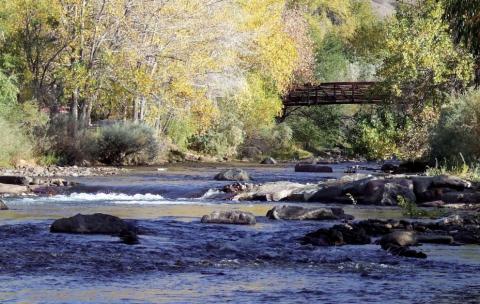Stormwater Quality and how you can help

The storm drainage system is designed to collect stormwater — rain and snow melt — and release it directly to Larimer County waterways, untreated. Pollutants are transported in stormwater as rain and snowmelt travel across surfaces such as lawns, roads and parking lots. This picks up substances such as fertilizers, pesticides, oil, trash and sediments before entering the waterways. Contaminants that enter the waterways degrade the quality of the source of our drinking water and the quality of fish and wildlife habitats. Therefore, care must be taken to ensure that stormwater runoff does not jeopardize the quality of the waterways. Implementing Best Management Practices (BMPs) and good housekeeping practices will help ensure a safe work environment and a cleaner water source for years to come.
Good Housekeeping Practices for Businesses, Auto Shops, Restaurants, Landscapers, and Builders/Remodelers:
- Cleaning
- Material Storage
- Spills Cleaners and Solvents
- Oil and Grease
- Equipment Maintenance
- Landscape Chemicals
- Erosion and Sediment Control
If there is a spill that has impacted or may impact Larimer County's waters, please contact:
Larimer County Department of Health and Environment
(970) 498-6775
Emergency Preparedness
Health Department staff can assess the threat to public health and/or the environment and provide information on cleanup procedures.
After business hours, please contact 911 for assistance.
Professional business practices, and an effective training program, can improve water quality in Larimer County.

